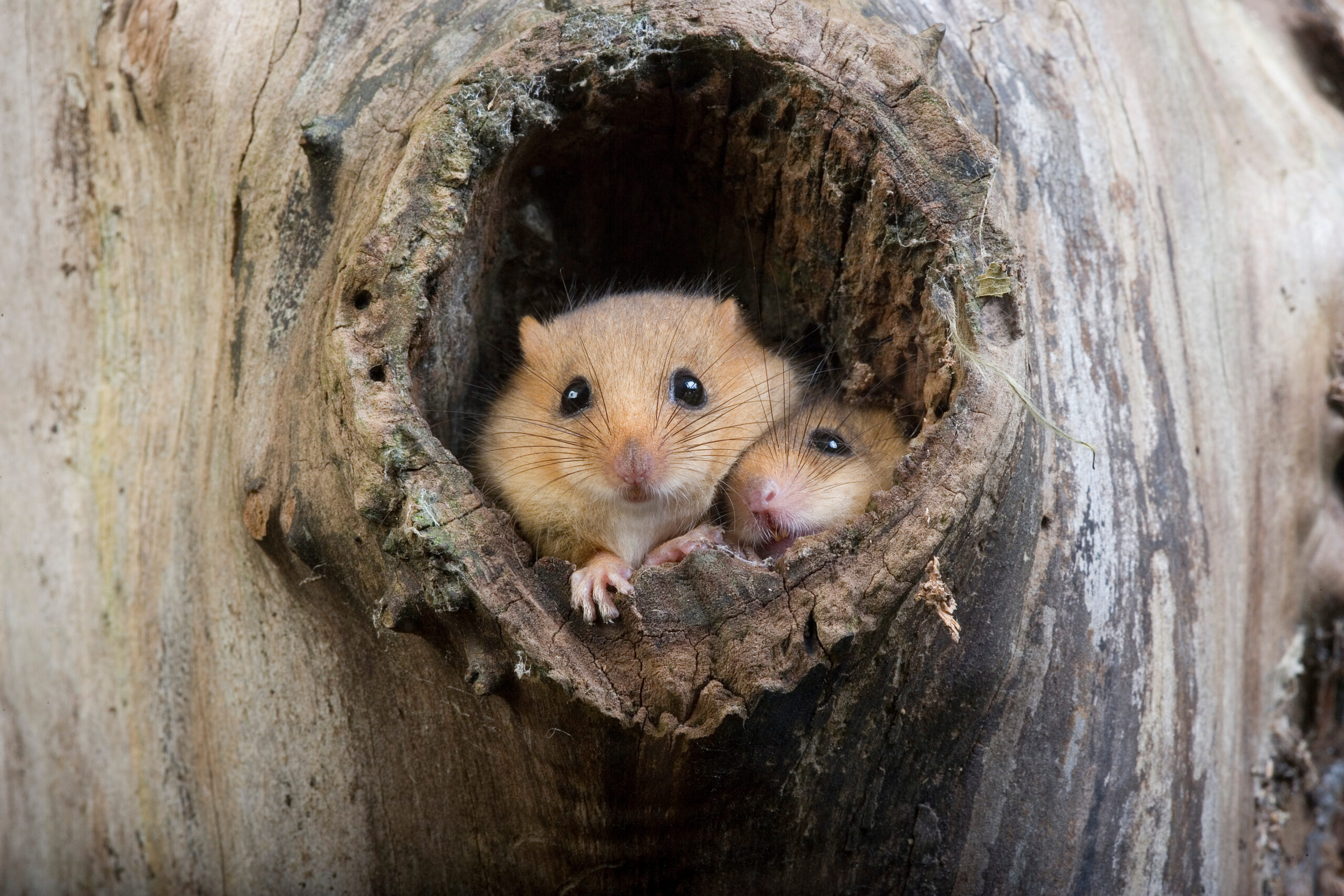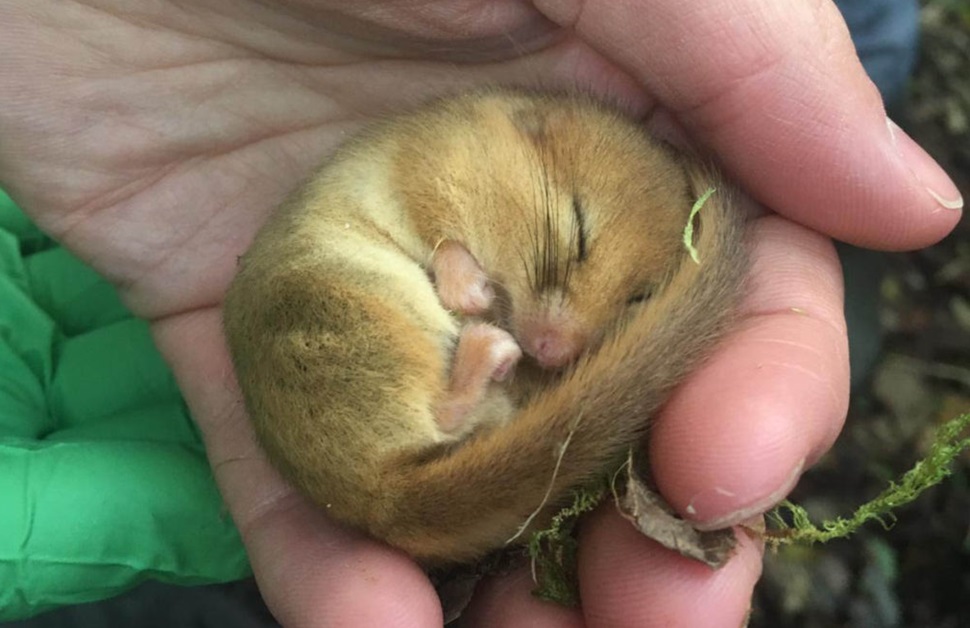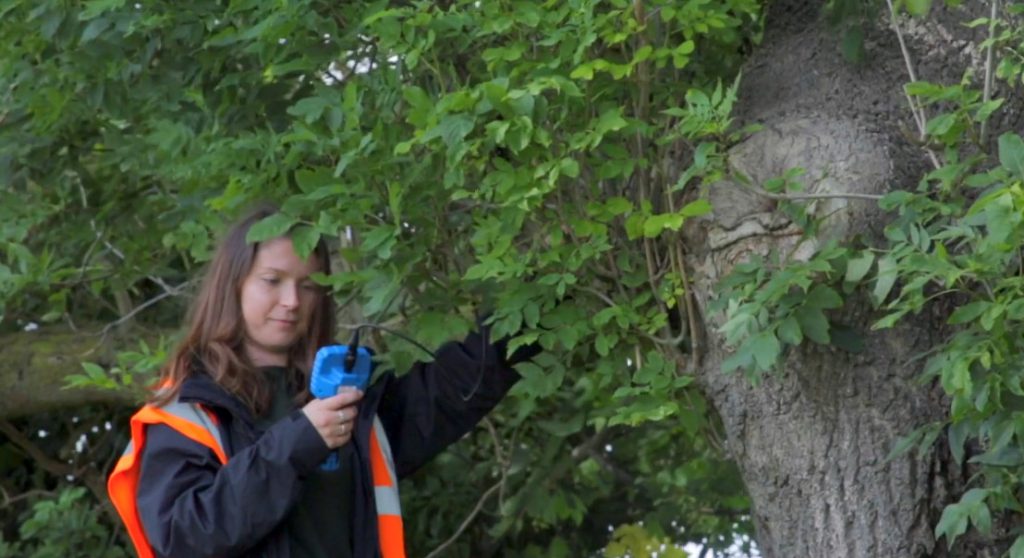Everything You Need to Know About Dormouse Surveys

According to the Mammal Society, the population of dormice across England and Wales surpasses 930,000. Due to a gradual depletion of woodland scrub and much wilder winters in recent times, dormice are now extinct in 20 of England’s 48 counties. In fact, over the past century, the dormouse populations in England have dropped by around 70%, sparking concerns over the hazard of going from endangered to extinct in the coming years.
Often difficult to spot, the dormouse sleeps throughout the day and comes out at night to forage trees for berries, hazelnuts and insects. A suitable habitat will be formed from leaves and grass, made into a breeding site deliberately created for female dormice to give birth to as many as seven young. The dormouse habitat in low-growing shrubs, deciduous woodland or species-rich hedgerows will then be vacated in the autumn for hibernation. Choosing an existing habitat under leaves, in logs or beneath the ground will suffice during hibernation due to the protection from the cold.
Part of the rodent family of Gliridae, Myoxidae or Muscardinidae, hazel dormice are the species commonly identified in England, notably appearing significantly smaller than a squirrel, with brown or ginger fur, black eyes and a long fluffy tail. The extent of the hazel dormouse’s time spent sleeping equates to three-quarters of a year, and if food is scarce in the build-up to hibernation, it is possible for them to save energy by dropping their body temperature in a process known as ‘torpor’.
As a result of the ever-decreasing population numbers, dormice and other animals and plants are listed as European protected species and defended by such legislation as the Wildlife and Countryside Act 1981 and the Conservation of Habitats and Species Regulations 2017. Laws strictly forbid any acts to recklessly disturb, damage or destroy dormice or any remaining habitat. On a development site, hazel dormice may be present, and if they are, you will need an assessment and corresponding mitigation strategies or run the risk of seeing your planning application denied by the local authorities.
Dormouse Surveys
Instructions to arrange hazel dormouse surveys on your development site will either be as the result of a prior ecological survey, following orders from the local planning authorities, or based on observations made by yourself or other individuals within your planning project.
As a precaution before any development works are carried out, a broad ecological survey such as a Preliminary Ecological Appraisal (PEA) would be advisable, as it gives the developer insight into the natural environment and all native animals and plants. If a dormouse presence is confirmed or even simply suspected, a dormouse survey will be the unavoidable next step.
Dormouse Surveying
Immediately after a PEA has indicated that a hazel dormouse may be present on a development site, upon instruction from the local council or following observations that could point towards dormice occupancy, a hazel dormouse survey will be necessary. Before any survey methods are executed, a desk study will be carried out by the licenced ecologist to retrieve historical records and local data in regard to hazel dormice within the known range of the area.
Formally confirming the presence or likely absence of hazel dormice on the site will be possible through monitoring all areas, helped by the use of nest searches, nut searches, nest boxes, nest tubes, and signs of the species such as footprint tunnels, suitable habitats and half-eaten nuts. Once the ecological consultant has enough evidence to state without uncertainty that dormice are in the local vicinity, it will be possible to gauge any negative impact on them or the planning project.
From the findings on the site to the development proposals, the ecological surveyor can determine any overlap between a dormouse resting place and the project. At this point, mitigation measures and compensation measures will be used to navigate a way forward, using a mitigation hierarchy to decide suitable solutions. Minimal habitat loss and negligible changes to the land or property development will be preferred, but as a last resort, hazel dormice may need to be moved to other habitats elsewhere and the plans may need to be significantly changed in order to avoid breaching relevant laws.
Dormouse Survey Report
At any point that an ecologist is able to categorically deny the presence of dormice or a dormouse habitat, the report will confirm that, stating that no further action is needed. Alternatively, a hazel dormouse or evidence of them has been spotted on the development site and any number of changes may be required before a planning application can be submitted to the local authorities.
Containing all applicable mitigation measures and compensation measures, a hazel dormouse survey report will include every piece of information requested by the local planning authority. As soon as all of the steps put forward by the ecological consultant have been completed, the planning officer should see no issue in granting planning permission.
Dormouse Survey Methodology
Aside from the general assessment of a development site, dormouse surveys involve multiple considerations, and each component may or may not be added based on the circumstances and purpose of the inspection.
In the section below, we explain certain features that may appear over the course of hazel dormouse surveys, including natural nest searches, nest boxes and nest tubes.
Natural Nest Searches
Due to the unique nature of how dormice nests are weaved, skilled ecological surveyors can often distinguish whether a nest belongs to them or another form of protected species. At any point that a dormouse habitat is spotted, a nest search facilitates an ecologist to search through shrubs, review all nests at length, and check for telltale signs of dormice.
Dormouse Nest Box
Similar in appearance to a bird box, a dormouse nest box is utilised for providing a suitably dry and warm habitat for dormice while enabling the ability to monitor hazel dormice populations. It has a hole on the side facing the tree that can be used for entering and exiting the box, and the box itself can then be checked regularly for evidence of dormice and to replenish nuts and other treats.
Dormouse Nest Tubes
Using the same approach as dormouse boxes, a dormouse nest tube will be left on the site for a prolonged period of time, facilitating hazel dormice to use as a habitat, and then undergo various checks to provide further food and gauge for the presence of dormice. Instead of being a square box, however, it is a long rectangular plastic container with a plywood tray on the bottom and open access on at least one end.
Dormouse Nut Hunts
An effective approach to identifying dormice in close proximity to a given area, a nut hunt involves individuals inspecting an area at length for indications of hazel dormice based on local nuts. Commonly conducted during the autumn and winter months of the year, all present nuts would need to be analysed using a magnifying glass for evidence of dormice intervention such as holes, teeth marks and a smooth inner rim inside the nut after being hollowed out.
Dormouse Survey Guidelines
In an effort to offer an optimum service to all clients, the ecology team at Arbtech ensures strict adherence to the guidelines, both from relevant regulators and active legislation. The Wildlife and Countryside Act 1981 condemns any acts that could damage or destroy a suitable habitat for hazel dormice, exercises that could pose any level of harm to a hazel dormouse, or practices that could in any way impact the presence of dormice.
In conjunction with other legislation such as the Conservation of Habitats and Species Regulations 2017, other forms of intervention that would be considered against the law include attempts to interfere with a habitat providing protection, block access to a habitat or areas of activity, or acts of habitat fragmentation. Clearing woodland could even be perceived as a breach of the law in relation to hazel dormice and other protected species, even if they are interfered with unknowingly.
Dormouse Survey Licence
As well as guaranteeing that all assessments are managed within the existing parameters, our ecological consultants can assist with all other considerations affecting hazel dormice, including the European protected species licence application. All listed animal species require a mitigation licence before an ecologist can relocate a hazel dormouse or destroy a nest.
Under some circumstances, the mitigation strategy can avoid any need for a dormouse licence, such as if no direct intervention is needed following tweaks to the development plans. If, however, the necessity for a mitigation licence is unavoidable, we can put forward the application to Natural England / Natural Resources Wales and see it through to completion.

Organise Your Dormice Survey
Making the decision to book in a Preliminary Ecological Appraisal (PEA) or similarly broad ecology survey will give you a full picture of the site and all native protected species of animals and plants. If you then discover a presence of dormice, arranging hazel dormouse surveys would be the recommended next step, especially as failing to do so could have a negative impact on your development plans and incur potentially devastating penalties.
Via our cutting-edge survey methods, we can undertake a hazel dormouse inspection of the site, including checks over nest boxes and nest tubes, execute nut hunts and nut searches, and complete a full analysis of hazel nuts where necessary. Our ecologists are situated all over the country, giving us the freedom to conduct assessments and provide advice to the large dormice populations in the Southern counties, and hazel dormice in practically any other location.
When to Survey for Dormice
It is only possible to undertake a dormouse survey outside of hibernation season, with a preference for particularly lively months of activity. As confirmed on our ecology survey calendar, the optimal period for a hazel dormouse survey based on season, temperature, weather conditions and behaviour would occur between the months of April and November.
Unlike many other protected species surveys, no suboptimal period exists, meaning that an assessment between December and March simply wouldn’t be realistic. At any point that a development site has a chance of housing dormice, the developer should consider booking in an assessment straight away, even if it means waiting until the following year.
Cost of Dormouse Surveys
Instead of charging every client the same price regardless of the size and scale of the planning project and development site, we aim to make our systems fairer by judging the cost of each assessment based on their unique specifications. By approaching the quotation stage in this way, we can prevent the price for a small, basic site from being as expensive as a large, complex site.
Booking hazel dormouse surveys as soon as you’ve received a suspected or proven presence of dormice or a dormouse habitat on your site is vital, particularly if it means planning ahead for the next available slot within dormouse survey season. That said, it would be advisable to first get in contact with our administration team for a quote before committing to dormouse surveys, enabling us to give you an accurate price beforehand.
Ask Our Team for a Quote
Start the assessment process for hazel dormouse surveys by reaching out to the helpful and friendly Arbtech administration team for a quote. You can do this either over the phone, via social media or through our website, and once you’ve sent across information about your site and project, we will send you a free quote for you to look over, with no obligation or pressure to move forward.
Assuming you opt to progress with us as your provider of hazel dormouse surveys, an ecological surveyor will visit the site on a chosen date. From this point, the focus will be on finding any potential resting place of native hazel dormice, checking nest boxes and nest tubes, carrying out nut searches, and finding any concerning correlation between the presence of dormice and the development plans.
Upon completion of the hazel dormouse survey, a report will be assembled to support the development proposals, featuring historical records, results from the inspection, and sufficient mitigation or compensation steps. We will also assist if a dormouse licence is needed, and with everything available for you and your local planning authority, planning consent should be perfectly attainable.


